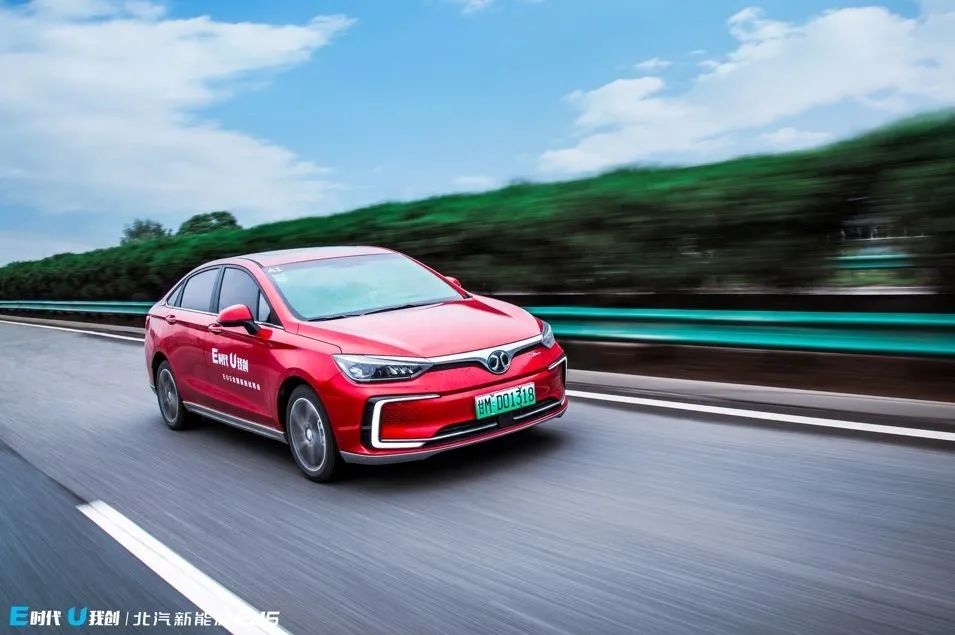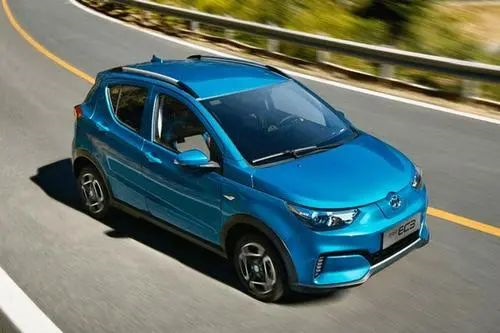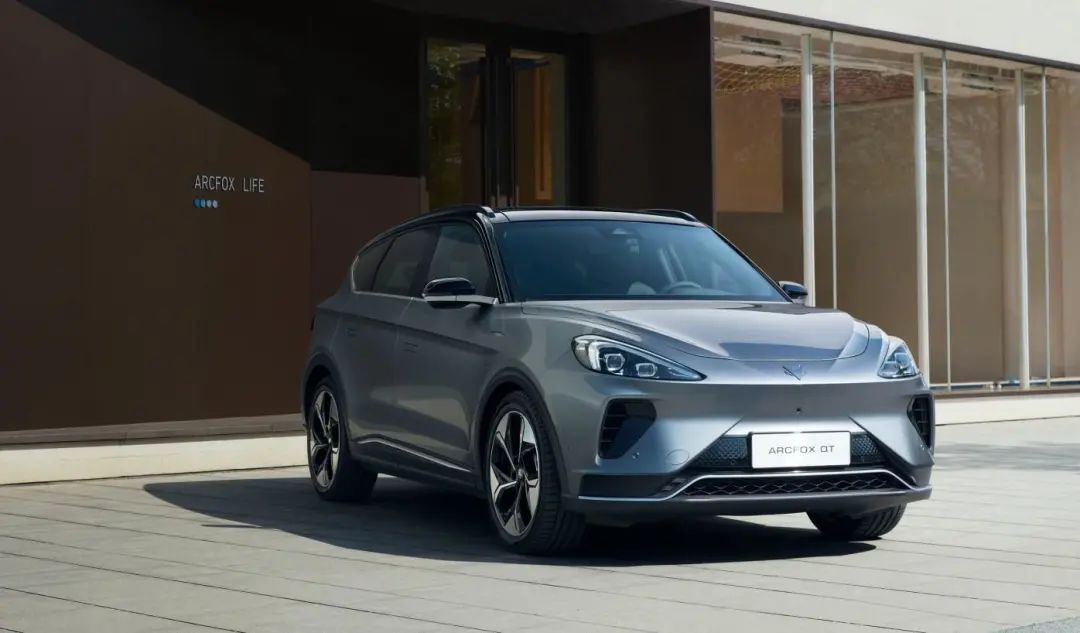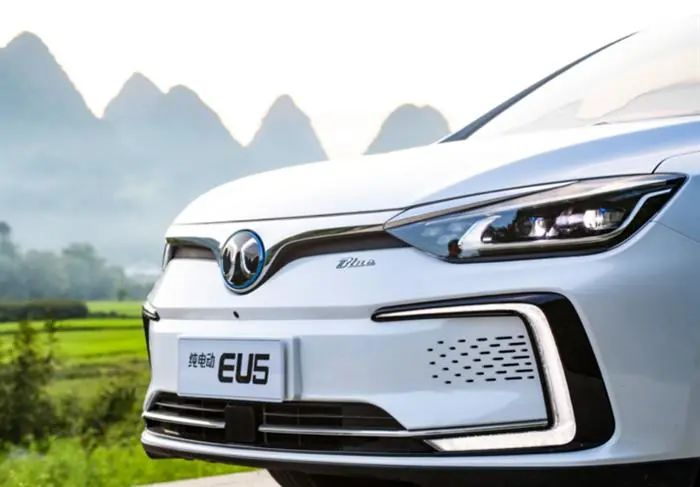Author: Wang Yunpeng
“In the development of BAIC Blue Valley, 2020 was the worst day, everything hit rock bottom, but it was also the best opportunity. Today’s pain may be tomorrow’s gain, it depends on whether we can be tough enough on ourselves.”
This was the speech of Lian Qingfeng, former Deputy Secretary of the Party Committee and spokesperson for BAIC New Energy, at the “New Opportunities, New Chapter” media communication conference of BAIC Blue Valley on February 3.
However, from the current situation, Lian Qingfeng was still too optimistic. 2020 was not the worst year for BAIC Blue Valley. On July 12, BAIC Blue Valley released the latest sales data of its subsidiary Beijing New Energy Automobile Co., Ltd. (referred to as BAIC New Energy). The data shows that the cumulative sales volume of BAIC New Energy in June this year was only 1587 vehicles, a decrease of 47.31% from the same period last year, when it was 3008 vehicles. The cumulative production volume in the first half of this year was 2157 vehicles, a year-on-year decrease of 74%. Cumulative sales volume was 6959 vehicles, down 52.66% from the same period last year, when it was 14700 vehicles.
Due to the sharp decline in the production and sales volume of its subsidiary, the stock price of BAIC Blue Valley also fell. According to data, on May 20, the stock price of BAIC Blue Valley rose to 19.87 yuan, and then began to fall all the way. As of the closing on July 15, the stock price was only 12.11 yuan per share, a decrease of more than 39%.
In contrast to the “dismal” performance of BAIC Blue Valley in the automotive and capital markets, the prosperity of China’s new energy vehicle industry has been continuously increasing since this year. According to data from the China Passenger Car Association (CPCA), the sales volume of new energy vehicles in China was 230,000 units in June this year, an increase of 177.7% year-on-year. The cumulative sales volume in the first half of the year was 1.007 million units, a year-on-year increase of 220.9%. Based on this growth rate, the sales volume of new energy passenger cars in China this year may exceed the estimated value of 2.4 million units.
At the capital level, the booming production and sales of new energy vehicles have also driven up the stock prices of many industry companies. Taking Great Wall Motors and BYD as examples, from the opening on May 20 to the closing on July 15, the stock prices of the two automakers rose from 34.6 yuan and 170 yuan per share to 43.76 yuan and 236.40 yuan per share, respectively, with increases of 26.47% and 39.05%.
It is not difficult to see how awkward the current situation of BAIC New Energy is in this comparison of ups and downs.
The Benchmark of the past
Although the current sales volume is very bleak, BAIC New Energy has not been without brilliance.# Going back to 11 years ago
In November 14th, 2009, BAIC New Energy was established. The first batch of pure electric vehicle EV150 of BAIC New Energy was produced in December of the following year. Public data shows that in the first year of sales, BAIC New Energy sold only 1600 vehicles. However, thanks to its establishment 5 years ahead of the recognized domestic new energy vehicle year (2014), BAIC New Energy successfully stood at the forefront of leading the development of domestic new energy vehicles.
In 2015, due to the concept of sharing economy spreading in various industries, as a time-sharing leasing industry of automobiles in the sharing economy, benefited from the rapid development of the new energy vehicle industry and the guidance of policies such as purchase restrictions, driving restrictions, and license plate restrictions, it also developed rapidly. This also gave BAIC New Energy, which pays more attention to the B-end market, the opportunity, and its product sales began to increase rapidly.

In 2017, BAIC New Energy’s cumulative sales reached 103,100 vehicles, accounting for 23% of the domestic new energy vehicles market share that year. It was the first pure electric vehicle company in China with an annual production and sales of more than 100,000 vehicles. In the global new energy vehicle market, BAIC New Energy’s sales that year were second only to Tesla, ranking second.
It is worth mentioning that in this year, BAIC New Energy also successfully broke through the mixed sales model and formed a nationwide layout covering 25 provinces and 139 cities with 280 sales stores and 249 service stations.
In 2018, BAIC New Energy continued to grow rapidly, and its 6 major series, including EH, EU, EX, EV, EC, and LITE with more than 10 pure electric vehicle models, achieved total sales of more than 158,000 vehicles throughout the year, a year-on-year increase of 53%, and achieved approximately CNY 16.438 billion in revenue, a year-on-year increase of 43.02%.

At the same time, relevant statistics show that compared with the initial stage of marketization in 2013, BAIC New Energy increased its staff size by 12 times, expanded its asset scale by 47 times, and increased its product sales by 97 times. The continuous high-speed growth also allowed BAIC New Energy to officially enter the A-share market in 2018, becoming the first domestic new energy automaker to enter the A-share market.
Moving onto 2019, BAIC New Energy’s sales exceeded 150,000 vehicles again, winning the title of the best-selling pure electric vehicle in the domestic market for 7 consecutive years. The outstanding performance also made BAIC New Energy the most successful case of traditional automakers transitioning to the new energy market in the industry’s commentary.
The Halo Fades RapidlyLooking back on the year 2019, with a yearly sales achievement of 150,000 units, it can be considered as a remarkable performance, nonetheless, there are underlying worries behind this achievement for BAIC New Energy. Data shows that at the end of 2019, BAIC New Energy’s sales volume decreased by 4.69% compared to the previous year.
It turns out that this was only the beginning of BAIC New Energy’s sales decline. In 2020, their sales dropped even further to 25,900 units, an 83% decrease from the previous year, causing their market share to fall from a peak of 23% to less than 1%.
If the drastic drop in sales in 2020 can be attributed to the pandemic’s influence, then as of this year, in the midst of the booming domestic new energy vehicle market, BAIC New Energy’s cumulative sales of new cars from January to June 2021 was 6,959 units, a decrease of 52.66% compared to the same period last year. This is somewhat hard to justify.
With the decline in sales, BAIC New Energy has also fallen into a slump of losses. Publicly available information shows that the full-year net profit of BAIC New Energy in 2019 was RMB 92.01 million, among which RMB 1.04 billion were government subsidies in non-operating income and expenses. This means that if the huge subsidies were excluded, BAIC New Energy would have suffered huge losses in 2019.
In 2020, due to the “dramatic plunge” in sales, BAIC New Energy’s operating income was only RMB 5.272 billion, a YoY decrease of 77.65%, with a net loss of RMB 6.482 billion, operating cash outflow of RMB 6.621 billion. YoY, operating cash outflow decreased by 3.82%. According to the 1Q financial report of BAIC BluePark, BAIC New Energy’s operating income was RMB 830 million, a YoY decrease of 50.19%, with a net loss of RMB 854 million.
Regarding BAIC New Energy’s decline, automotive industry analyst Ren Wanfu stated that the lack of strength in product quality, the government’s subsidy withdrawal, the departure of CEO Zheng Gang, and the group’s various organizational restructuring of its subsidiaries are all factors that have affected its development.
Perhaps due to the impact of BAIC New Energy’s declining sales and performance, BAIC BluePark recently found itself in a wave of layoffs. It was reported that a Beijing Auto insider anonymously reported that Beijing Automobile BluePark Marketing Service Co. Ltd. was engaging in “illegal layoffs.” According to industry media reports, when Beijing Automobile BluePark Marketing Service Co. Ltd. was established a year ago, it had 915 employees, but now it has only 500 employees left.
The management of Beijing Automobile BluePark Marketing Service Co. Ltd. explained that due to poor performance over the past two years, the reduction in employees is a natural outcome. However, some industry media outlets stated that many employees reported that the company’s methods of layoffs and salary reductions have violated relevant regulations, and they intend to fight for their rights.
 # North New Energy: Frequent “Blood Changes” and Missed Opportunities
# North New Energy: Frequent “Blood Changes” and Missed Opportunities
It is worth mentioning that the management of BAIC New Energy had already embarked on a frequent “blood change” road before the layoff crisis occurred. In February 2019, Mafanglie took over as general manager of BAIC New Energy, but served for less than a year. In June 2020, He Zhangxiang, then vice general manager of BAIC New Energy, temporarily assumed the position of general manager. On July 24, 2020, Liu Yu officially took over from Mafanglie as the general manager of BAIC New Energy.
Embarrassingly, Liu Yu also changed positions as the general manager of BAIC New Energy less than a year after taking office. On June 9, BAIC Blue Valley announced that the former company manager, Liu Yu, had submitted a written resignation report and no longer held the position of company manager, but still held positions such as chairman of BAIC Blue Valley and chairman of the Board Strategic Committee. The position of general manager of BAIC New Energy was taken over by Dai Kangwei, the former deputy dean of BAIC New Energy Engineering Institute.
In addition to frequent changes in the top leadership position, various position adjustments were made for other employees, such as Ye Xiaohua, vice manager and financial person in charge of BAIC New Energy, Dong Qinfeng, staff representative director, Yin Weijie, company supervisor, Zhang Jianyong, and Liu Rui, company director.
In the industry’s view, as a car company that can no longer afford to lose, frequent turbulence in high-level personnel changes will inevitably bring more uncertainties and will affect the company’s business progression.
Are high-end brands a cure?
From a time perspective, BAIC New Energy is an unequivocal “old player” in the domestic new energy vehicle market.
However, in terms of the current situation, this “early bird” has not only been surpassed by new forces such as NIO, IDEAL, and XPeng, but the gap between BAIC New Energy and industry leaders such as Tesla and BYD is also growing. In other words, BAIC New Energy is missing the “wave” of domestic new energy vehicles.
As a former industry giant, how did BAIC New Energy fall into its current predicament? In fact, the decline of BAIC New Energy can be traced. Information shows that when BAIC New Energy was established, it mainly targeted the B-end market, including customers such as taxis, online car-hailing, and car rental industries. From 2013 to 2019, a period of high sales growth, these industries developed rapidly and contributed 70% of the sales volume of 150,000 in 2019, while the private car market contributed less than 30%. In 2020, with the collapse of the new energy B-side market, the sales of BAIC New Energy, who had been relying solely on government purchase orders, almost “collapsed overnight”. In fact, facing the sales downturn in 2020, BAIC New Energy did make efforts, but at this time the C-side market almost has no place for its footing.
Perhaps seeing that it’s difficult to achieve success in the low-end market in a short period of time, BAIC New Energy began to turn its breakthrough point to the high-end market. In October 2020, ARCFOX, a high-end brand that had been dormant for three years, launched its second model – the pure electric SUV ARCFOX αT.

Unfortunately, at this time, the domestic high-end new energy vehicle market has almost been divided and occupied by Tesla, NIO, XPeng and other companies. Even with the support of Huawei, the sales of ARCFOX did not improve significantly. Data showed that from its launch in August 2020 to the end of that year, ARCFOX αT sold a total of 709 units, and only 521 units were sold from January to May of this year. In addition, the delivery time of the Huawei HI version of ARCFOX αS was scheduled for the end of this year, and its sales in the first five months of this year were only 246 units.
In the fiercely competitive domestic new energy vehicle market, BAIC New Energy’s practice of delaying the delivery time of a heavyweight model for half a year has raised some concerns.
In the scorching Beijing summer, BAIC New Energy, seeing its sales performance, may only feel “chills”. Under the leadership of a new leadership structure, the future of when BAIC New Energy can get out of its predicament and whether the ARCFOX brand, positioned in the high-end market, can become a lifesaving straw, is still unknown.
This article is a translation by ChatGPT of a Chinese report from 42HOW. If you have any questions about it, please email bd@42how.com.
